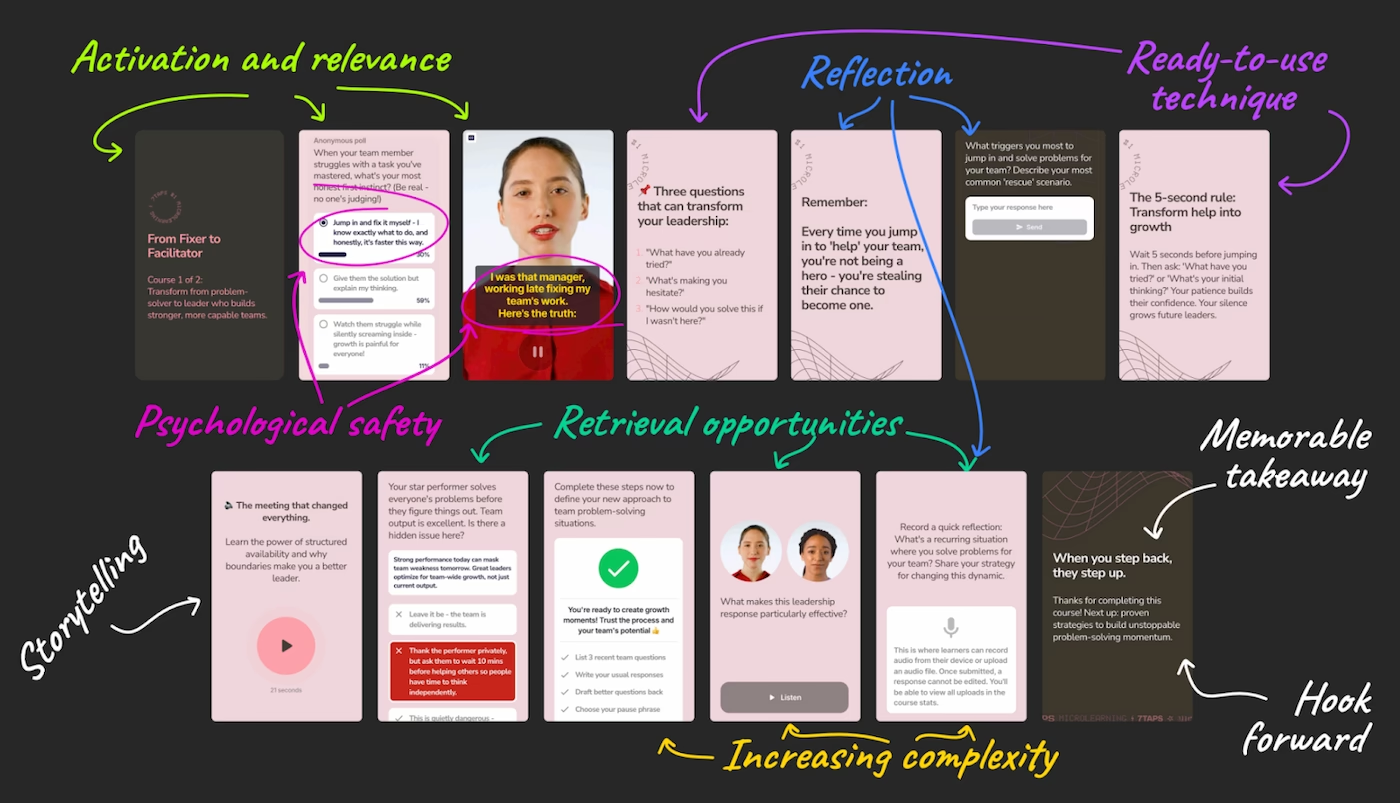
7taps
#1 Microlearning Platform
Sign up east
14-day trial. Zero cost. Full access. No credit card required.
March 14, 2025
•
Kate Udalova
Economic downturns historically trigger budget reductions across organizations, with L&D often among the first departments affected. Yet, these periods of constraint create the ideal conditions for innovation, says Stjepan Werft, Digital Training Lead at Bridgestone EMEA.
Recent LinkedIn research supports this view, too, showing that 91% of L&D professionals agree continuous learning has never been more important for career success, even as resources are tightened.
Let's explore Werft's framework for digital learning strategy optimization that balances fiscal responsibility with learning effectiveness.
A framework for strategic L&D optimization
Beyond basic auditing: The starts with "Know Yourself" - emphasizing that before diving into optimization, you need to thoroughly understand your current learning landscape. Rather than simply cataloging assets, this means evaluating:
✅TIP: You might find our Learner Persona template helpful at this stage.
Action steps:
This foundational step, as Werft notes, ensures you're not optimizing blindly but making strategic choices based on a clear understanding of your current state.
Consider using AI to automate low-value tasks, allowing L&D professionals to focus on strategic initiatives. Werft passionately advocates for embracing technology, particularly for those operating as a "one-man army" in L&D.
A key recommendation is to "Utilize AI-powered tools to automate low-value tasks, allowing L&D professionals to focus on high-value activities and projects." This approach is especially valuable for resource-constrained learning teams who need to maximize their strategic impact.
Strategic considerations:
Recent LinkedIn data validates this approach, showing that organizations with mature learning strategies are significantly more likely to be leaders in AI adoption. They're leveraging technology not just as a cost-saving measure, but as a strategic enabler of personalization at scale.
✅TIP: Check out 7taps Microlearning Copilot AI—the AI tool designed specifically to help L&D professionals create science-backed microlearning modules in minutes.

Effective learning technology management requires more than simply adding new tools—it demands thoughtful integration and occasional pruning.
Optimization strategies:
Werft suggests blending technical and sales skills for a dynamic approach to technology management. This means being able to both evaluate the technical aspects of learning platforms while also advocating for their business value to stakeholders.
Werft likens content management to managing a forest—you need fresh, relevant material to nurture learners while removing outdated content. This metaphor elegantly captures the balance between growth and pruning required for an effective learning portfolio.
He specifically highlights the importance of "bite-sized" training inspired by social media platforms to boost engagement and utilization. This microlearning approach is central to Werft's content strategy, recognizing that modern learners have limited time and attention spans.
Strategic portfolio approach:
This approach acknowledges what LinkedIn research has confirmed: most employees only have small windows of time for formal learning and prefer formats that respect these constraints.
A critical distinction often overlooked in analytics-driven organizations is balancing user data with user voice. Werft highlights that while data offers insights, human connection delivers engagement. Citing Wayne Gretzky's wisdom to "skate to where the puck is going, not where it has been," he encourages L&D leaders to anticipate needs rather than just react to current data.
Balanced approach:
This human-centered approach ensures optimization decisions consider both quantitative efficiency and qualitative effectiveness—a balance that research shows leads to more successful outcomes than purely data-driven decisions.
One of the most exciting opportunities for L&D in 2025 is the idea of adopting a product mindset. This represents a fundamental shift from seeing learning as a service to treating it as a product that needs constant refinement.
The framework emphasizes four key elements of this mindset:
Organizations that adopt this mindset, according to recent LinkedIn data, are better positioned for both business success and technology adoption. They demonstrate greater confidence in profitability and are more likely to be leaders in AI implementation—suggesting that agility in learning approaches correlates with overall organizational resilience.
Product mindset implementation:
Drawing from Werft's insightful "Recipes for Recession" slide, several critical strategies emerge for L&D leaders navigating economic uncertainty:
Related resource: measuring the ROI of microlearning
As Stjepan Werft highlights in his strategic framework for digital learning, true optimization isn't just about cost-cutting—it's about fundamentally rethinking how we approach learning design, technology integration, and measurable business impact.
By adopting his digital learning strategy—from comprehensive ecosystem analysis to product-mindset iteration—L&D leaders can position their function not as a cost center but as a critical driver of organizational resilience and competitive advantage.
This article is based on Stjepan Werft's framework for learning optimization presented at MicrolearningCONF (sign up for the next one!), supplemented with insights from LinkedIn's 2025 Workplace Learning Report and other industry research.